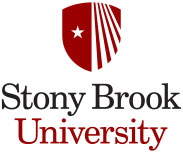 | ConcepTests |
 | ConcepTests |
The resources here were written by experienced secondary mathematics teachers for use in high school mathematics classes.
In order to teach and assess individual student conceptual understanding and also stimulate student-student discussions, try this:
It is likely that students will solve their own misconceptions, and the second vote will tell you whether or not to devote more discussion to the problem. Use a ConcepTest as an anticipatory set to motivate a lesson or a unit. Use during the lesson to give students time to process and discuss their ideas. Use as lesson or unit closure or for an exam review.
Please feel free to send comments on these resources and, of course, to write and use your own ConcepTests as well! (lisa dot berger at stonybrook dot edu).
Summer 2018!!!
We anticipate facilitating a group of ten experienced geometry teachers interested in learning about ConcepTests and creating geometry resources, for individual use and dissemination, this summer. Interested teachers should submit the brief application form by April 20, 2018.
Application for July/August Geometry ConcepTests Workshop
ConcepTests:
Linear Functions and Equations: Quadratic Functions:
Exponential and Logarithmic Functions:
Trigonometry:
Probability and Combinatorics:
Functions:
Sequences and Series
Acknowledgements:
Amy Cappiello, Commack teacher, was primarily responsible for typesetting and organizing edits to this work.
The teachers contributing to this work, to date, include: Kristen Acierno, Amy Cappiello, Lawrence Maggio, Pam O'Brien, Donna Engel, Ellen Fraser, Kristin Holmes, Elizabeth Kamerer, Theresa Kraycar, Christina Pawlowski, Derek Pope, Marianne Schoepflin, and Bobby Varughese
Most secondary mathematics teachers contributing to this project were
partially supported by the NSF through an RTG grant of the Department of Mathematics and the Simons Center for Geometry and Physics. Some teachers were also partially supported through their participation in the SUNY Master Teacher Program.